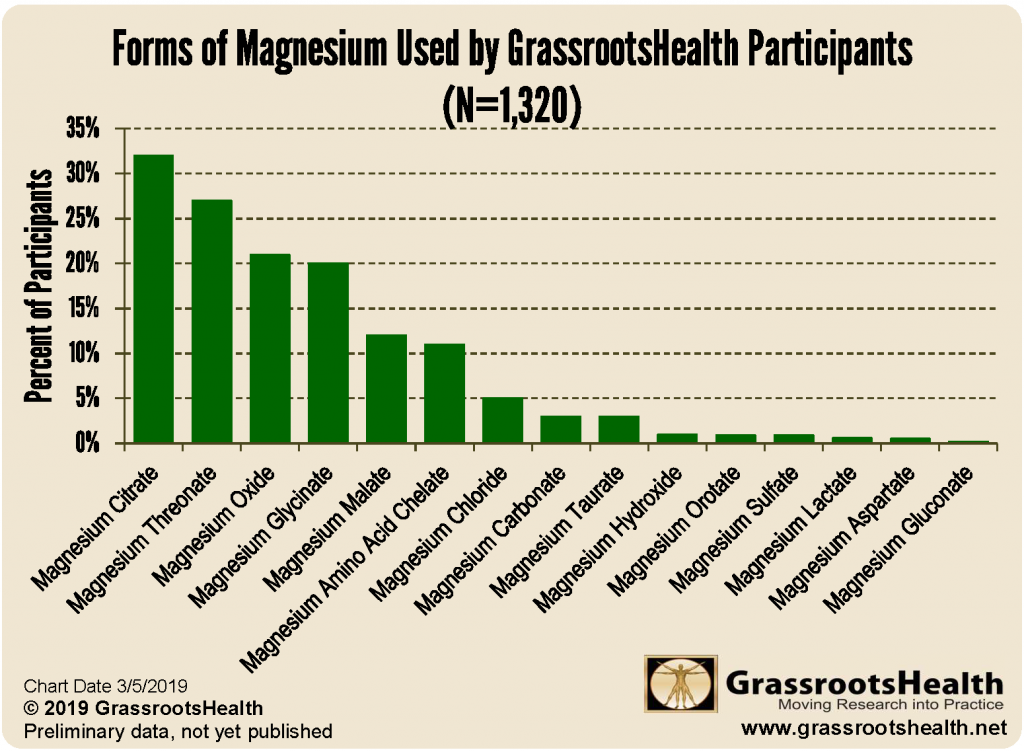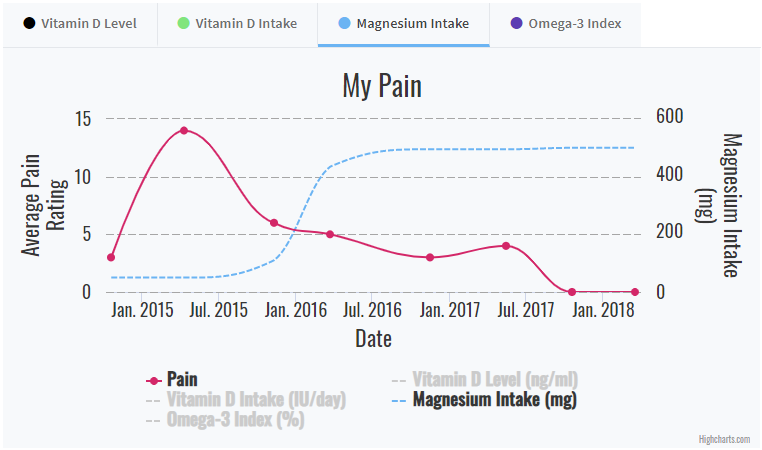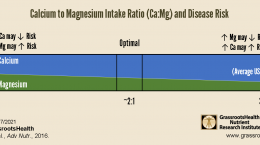Published on March 8, 2019
GrassrootsHealth recently released the D*action + Magnesium Safety project – a project to learn more about current levels of magnesium (Mg) in our study population and how it relates to magnesium intake, vitamin D levels, and health outcomes. In previous blogs we discussed what magnesium is, why it’s important for health, and how magnesium status is assessed.
Forms or types of magnesium
 There are many different forms or types of magnesium contained in nutritional supplements, topical creams, and oils. Each form consists of a magnesium molecule or ion attached to another molecule, which can affect the action and bioavailability of the magnesium itself. Some people find magnesium supplements may give them diarrhea, particularly with magnesium chloride, gluconate, hydroxide, and oxide. This is often resolved by trying a different form, or reducing the dose.
There are many different forms or types of magnesium contained in nutritional supplements, topical creams, and oils. Each form consists of a magnesium molecule or ion attached to another molecule, which can affect the action and bioavailability of the magnesium itself. Some people find magnesium supplements may give them diarrhea, particularly with magnesium chloride, gluconate, hydroxide, and oxide. This is often resolved by trying a different form, or reducing the dose.
Following is a list of some common forms of magnesium found in supplements, in order of popularity among GrassrootsHealth participants:
Magnesium Citrate
derived from citric acid
excellent bioavailability
supports digestion-specifically, to alleviate constipation and acid indigestion
inexpensive
may lead to dehydration (and the imbalance of minerals associated with this), as it pulls water into the intestines
Magnesium Threonate
good bioavailability
potential to improve cognitive functions, memory deficits
shown to increase levels of magnesium in the brain
Magnesium Oxide
lower levels of bioavailability
relieves constipation
encourages improved digestion
Magnesium Glycinate
promotes muscle relaxation — the amino acid glycine is also known for calming mind and body
easily absorbed
optimum bioavailability
minimal laxative properties
Magnesium Malate
bound to malic acid, an organic compound found in fruits and vegetables, especially apples
binds to toxic metals, like aluminum
promotes healthy skin, muscle performance, saliva production, energy levels
highly bioavailable
Magnesium Amino Acid Chelate
This one is a bit different than the others as it is a general term for magnesium attached to an amino acid that encompases several different forms, including magnesium glycinate, magnesium lysinate, magnesium orotate, and magnesium taurate.
easily absorbed
Magnesium Chloride
may be extracted from brine or ocean water
can be absorbed through the skin
encourages sleep, digestion, bone health and a sense of calm (both mental and physical)
helps to relieve muscle spasms, cramps, dermatitis, eczema, and acne
may cause diarrhea
Magnesium Carbonate
used in antacids
low solubility and absorption
Magnesium Taurate
proposed use for prevention of migraines
Magnesium Hydroxide
suspended in water
used in antacids and laxatives
Magnesium Orotate
encourages heart health
orotic acid may naturally support the repair of tissues, as well as enhanced stamina and performance
more expensive option
Magnesium Sulfate
otherwise known as Epsom salts
helps to alleviate sore muscles
most potent laxative effect
intravenous for the management of pre-eclampsia and eclampsia
Magnesium Gluconate
less of a laxative effect
Magnesium Lactate
good bioavailability
commonly used to manage digestive issues
should be avoided by those with kidney disease or kidney-related problems
What forms of magnesium do D*action participants take?
Out of 1,320 D*action participants who reported taking supplemental magnesium, the most popular forms reported were magnesium citrate (32%), magnesium threonate (27%), magnesium oxide (21%), and magnesium glycinate (20%).

How can I track my magnesium intake and levels?
To help you track your magnesium intake, status, and other nutrient levels, GrassrootsHealth has created an online tracking system called myData-myAnswers. This will help you know how your supplementation and intake may be affecting you and impacting your health. Check it out today!








